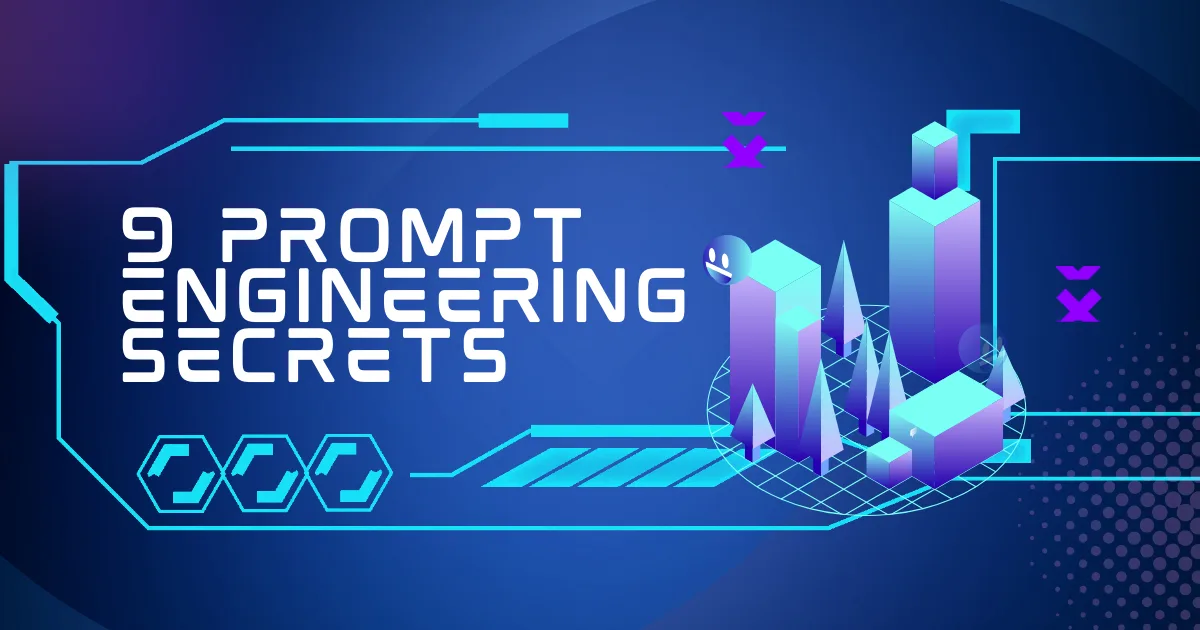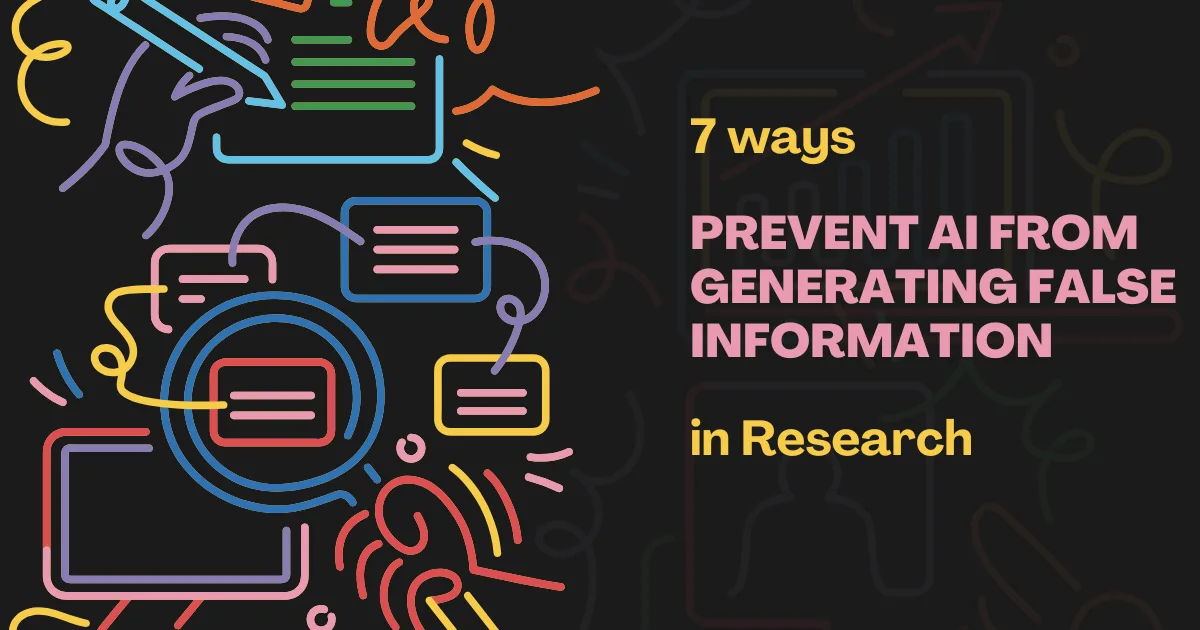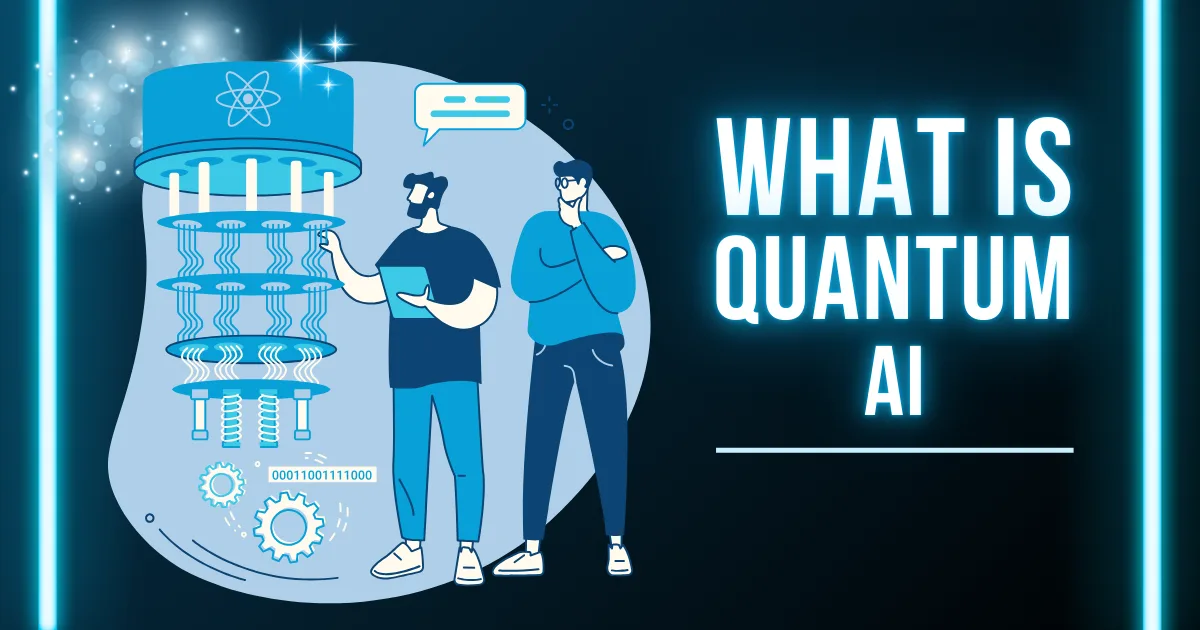In today’s rapidly evolving technological landscape, the ability to effectively communicate with artificial intelligence has become a critical skill. While many people use AI tools like Claude, ChatGPT, and others for basic tasks, few have mastered the art of prompt engineering—the practice of crafting instructions that unlock AI’s full potential. This guide reveals nine essential prompt engineering secrets that most users overlook, yet can dramatically transform your productivity, learning, and creative output.
As generative AI continues to reshape how we work, learn, and create, understanding these advanced communication techniques will separate casual users from true AI power users. Whether you’re a professional looking to streamline workflows, a student aiming to enhance learning, or a creative seeking to expand your capabilities, these prompt engineering secrets will help you achieve superior results with less effort and frustration.
Let’s explore how to transform your AI interactions from basic conversations to powerful collaborations that deliver exceptional outcomes.
Secret #1: Master Structural Frameworks That Shape AI Thinking
The first and perhaps most foundational secret to effective prompt engineering lies in understanding how structure influences AI reasoning. Most users simply ask questions or make requests without considering how the format of their prompt guides the AI’s thought process.
The Power of Structured Thinking Templates
Advanced prompt engineers use structural frameworks that essentially create a “thinking template” for the AI to follow. These frameworks act as cognitive scaffolding that guides the system toward more thoughtful, comprehensive responses.
For example, instead of asking “Is this business idea good?”, a structured approach might be:
“Evaluate this business idea using the following framework:
- Market analysis: Assess the target market size and growth potential
- Competitive landscape: Identify key competitors and barriers to entry
- Revenue model: Analyze pricing strategy and revenue streams
- Operational requirements: Outline key resources and capabilities needed
- Risk assessment: Identify potential challenges and mitigation strategies
- Overall viability: Provide a final assessment with specific recommendations”
You are an experienced business analyst with a strong background in evaluating startup ideas and developing comprehensive assessments. Your expertise is in providing detailed, data-driven evaluations that cover feasibility, scalability, and risks associated with innovative business concepts.
Your task is to evaluate the following business idea using a structured framework. The analysis should be thorough and logically organized to ensure a comprehensive assessment.
Business Idea: AI-Powered Resume & Interview Coaching Platform
Key features include:
AI analysis of job descriptions to tailor resume suggestions.
Mock interview simulations with real-time AI feedback.
Subscription-based pricing model with tiered features (resume scoring, industry-specific coaching, real-time mock interviews).
Evaluation Framework:
Market Analysis: Define the target market, including demographics and career stages (e.g., students, professionals, career changers). Estimate the market size and projected growth using industry data. Analyze current hiring trends and AI adoption in career coaching.
Competitive Landscape: Identify and compare key competitors (traditional career coaches, AI-powered resume builders, LinkedIn services). Analyze barriers to entry (e.g., AI development costs, brand trust, regulatory compliance). Highlight unique value propositions and potential differentiation strategies.
Revenue Model: Explain the pricing structure (subscription tiers, freemium options, pay-per-use models). Assess monetization scalability and recurring revenue potential. Evaluate customer acquisition strategies (B2C vs. B2B partnerships with universities/recruiters).
Operational Requirements: Outline technical infrastructure needs (AI models, cloud computing, data security). Define key personnel requirements (AI engineers, career experts, UX designers, marketing team). Assess necessary partnerships (universities, job platforms, recruiters).
Risk Assessment: Identify key risks (AI bias in resume evaluations, data privacy concerns, high customer churn). Suggest mitigation strategies (continuous AI improvements, compliance with GDPR/CCPA, user trust-building mechanisms). Evaluate market risks (competition, user adoption challenges).
Overall Viability & Recommendations: Provide a final feasibility rating based on strengths, weaknesses, opportunities, and threats. Suggest actionable next steps to improve the business model, enhance differentiation, or optimize scalability.
Please ensure your analysis is detailed, data-driven, and logically structured, keeping in mind the aspects mentioned above.
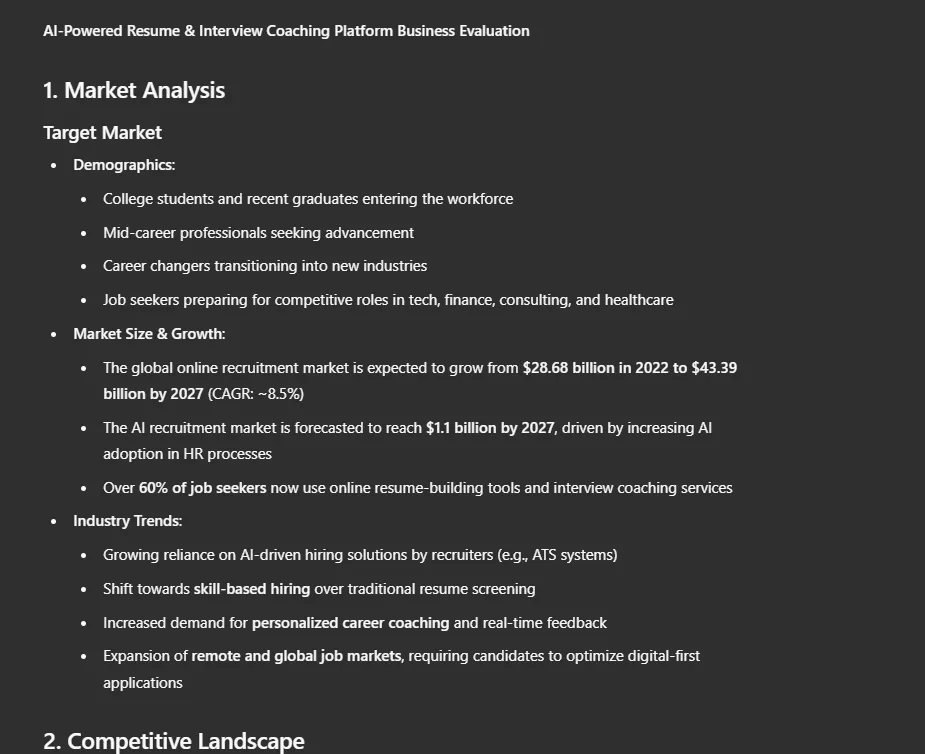
This structured approach activates a more systematic analysis than an open-ended question, leveraging the AI’s ability to follow multi-step reasoning processes.
Implementing Reasoning Chains
One particularly powerful structural technique is the chain-of-thought approach, which breaks complex problems into sequential reasoning steps:
“To solve this optimization problem, walk through your reasoning using the following steps:
- Identify the variables and constraints from the problem description
- Establish the objective function that needs to be maximized or minimized
- Determine which optimization method is most appropriate
- Apply the method step-by-step
- Verify your solution against the original constraints
- Interpret the real-world meaning of your result”
You are an expert in logistics and operations research with extensive experience in solving complex delivery route optimization problems. Your specialty lies in using structured methodologies to clearly define each step of the optimization process while justifying your reasoning for accuracy and clarity.
Your task is to solve a delivery route optimization problem using a structured approach.
problem:
Problem Description: Optimizing Delivery Routes for a Logistics CompanyA logistics company wants to optimize its delivery routes to minimize total travel distance while ensuring all packages are delivered within a given timeframe. The company operates with a fleet of ___ (number of trucks) trucks, each with a maximum capacity of ___ (maximum capacity in kg). Packages have different delivery locations, and each location has specific time window constraints.
Step-by-Step Solution Framework:
Identify Variables and Constraints:Decision Variables:𝑋 𝑖 𝑗: Whether truck ___ (truck index) travels from location ___ (location j) to ___ (location k).𝑌 𝑖: The load carried by truck ___ (truck index).𝑇 𝑗: Time at which delivery is made at location ___ (location j).
Constraints:Each truck must not exceed its maximum weight capacity of ___ (max capacity).All delivery locations must be visited exactly once.The total route length should be minimized.Each delivery must be made within the specified time window.
Establish the Objective Function:The goal is to minimize total travel distance while ensuring on-time deliveries.Objective function: Minimize ∑ 𝑖 ∑ 𝑗 , 𝑘 𝐷 𝑗 𝑘 𝑋 𝑖 𝑗, where 𝐷 𝑗 𝑘 represents the distance between locations ___ (location j) and ___ (location k).
Select an Appropriate Optimization Method:Given the constraints and goal, the Vehicle Routing Problem (VRP) framework applies. The most suitable method includes:
Integer Linear Programming (ILP) for an exact solution (if the problem is small).
Genetic Algorithm (GA) or Ant Colony Optimization (ACO) for heuristic solutions when the problem size is large.
Apply the Optimization Method Step-by-Step:Step 1: Define nodes (locations) and edges (distances between them).Step 2: Assign packages to trucks based on capacity constraints.Step 3: Use a shortest path algorithm (e.g., Dijkstra’s or Floyd-Warshall) to identify optimal routes.Step 4: Implement time window constraints to ensure timely deliveries.Step 5: Optimize further using local search techniques (e.g., 2-opt swap for route refinement).
Verify Solution Against Constraints:Check if all deliveries are completed within their respective time windows.Ensure no truck exceeds the ___ (maximum kg) weight limit.Confirm that all locations are visited exactly once.
Interpret the Real-World Meaning of the Result:The optimized route plan will reduce fuel costs and delivery time, improving efficiency. Potential bottlenecks in time windows or capacity limitations can be addressed by adding extra trucks or adjusting package loads. The company can use this optimization model dynamically to adjust daily delivery plans based on package demand.By explicitly mapping out the reasoning chain, you force the AI to show its work rather than jumping to conclusions, greatly reducing errors and improving transparency.
Most users simply ask for answers, but prompt engineering masters know that controlling how the AI thinks is often more important than what it thinks about.
Secret #2: Harness Role-Based Prompting for Specialized Expertise
The second secret that separates novice from expert prompt engineers is the strategic use of role assignments. Most users interact with AI as a generic assistant, missing the opportunity to access more specialized forms of expertise.
Expert Persona Activation
When you assign a specific role or expertise area to the AI, you activate domain-specific knowledge, terminology, and reasoning patterns. This technique essentially tells the AI which “mental models” to prioritize in its response.
Rather than asking “How can I improve my marketing strategy?”, a role-based approach might be:
“As an experienced Chief Marketing Officer who has led successful campaigns for SaaS companies, analyze my current marketing approach. Identify the three most impactful improvements I could make based on current industry best practices and emerging trends in digital marketing. Provide specific, actionable recommendations that consider my limited budget and small team size.”
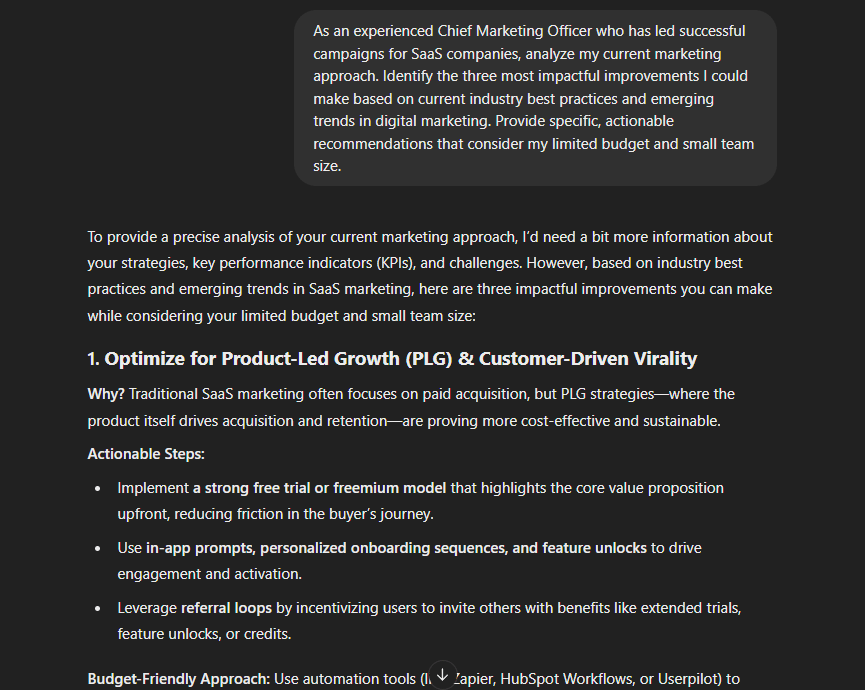
This prompt activates marketing-specific expertise and frames the response from a particular professional perspective, resulting in more relevant, specialized guidance.
Multiple Expert Perspectives
An advanced application of this technique involves requesting multiple expert viewpoints on the same issue:
“I’m considering investing in cryptocurrency. Please analyze this decision from three different expert perspectives:
- As a financial advisor focused on long-term wealth building
- As a technology expert who understands blockchain fundamentals
- As a risk management specialist who evaluates potential downsides
For each perspective, provide the key considerations, recommendations, and potential blind spots that might be overlooked by the other experts.”
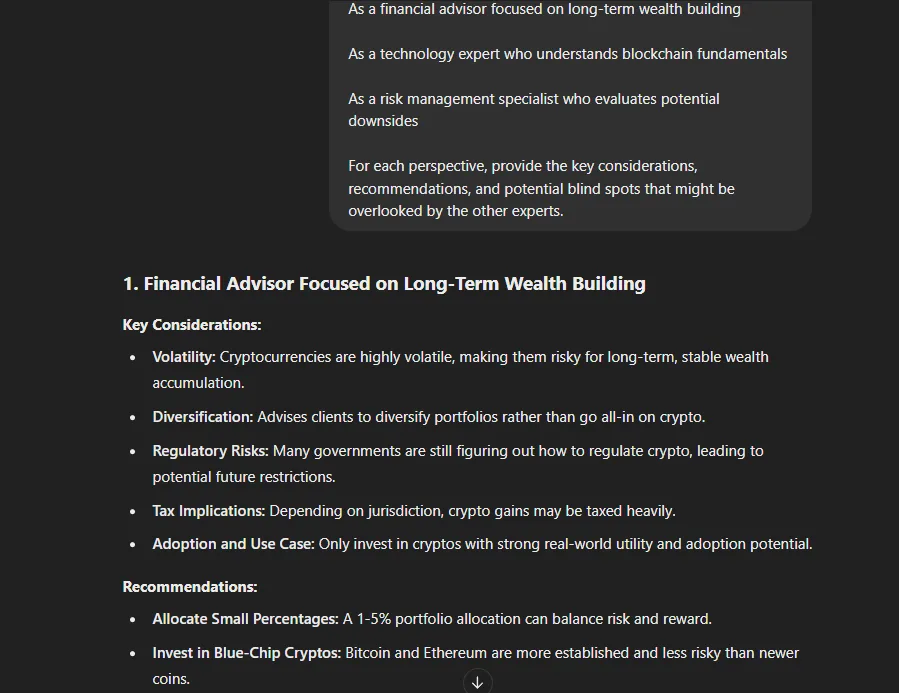
This approach generates a more comprehensive, multidimensional analysis than a general inquiry would produce, helping you make better-informed decisions.
The role-based secret works because AI systems are trained on content from many different domains and can simulate various expert perspectives when properly instructed.
Secret #3: Control Output Parameters with Precision Commands
The third secret that most AI users miss is the ability to precisely control output parameters through specific command structures. Rather than accepting whatever format and level of detail the AI chooses to provide, skilled prompt engineers explicitly define these elements.
Dimensional Parameter Control
Advanced prompt engineers specify multiple dimensions of the output simultaneously, creating highly customized responses:
“Provide an analysis of renewable energy trends with the following specifications:
- Depth: Intermediate level assuming basic understanding of energy markets
- Length: Approximately 700 words focused on the most essential information
- Structure: 4 sections with clear headings covering technology advances, market growth, policy influences, and future outlook
- Tone: Balanced and objective, acknowledging both opportunities and challenges
- Supporting elements: Include 3-4 specific data points or examples for each section
- Technical level: Explain specialized terms but don’t avoid important industry concepts”
This multi-dimensional parameter control ensures the response matches your exact needs rather than receiving a generic treatment of the topic.
Context-Specific Formatting
Precise output control also applies to specialized formats for particular contexts:
“Create a project post-mortem analysis formatted specifically for executive review with:
- A 150-word executive summary highlighting key findings
- Three primary success factors with supporting evidence
- Three critical failure points with root cause analysis
- Forward-looking recommendations presented as bulleted action items
- A visual representation of the project timeline with critical inflection points marked
- All content optimized for a 10-minute presentation slot”
This level of specification transforms general AI capabilities into context-specific outputs that serve particular professional needs.
While basic users accept whatever the AI provides, masters of prompt engineering know that explicitly defining output parameters leads to more useful, efficient results tailored to specific contexts and purposes.
Secret #4: Leverage Example-Driven Communication Through Few-Shot Learning
The fourth secret of effective prompt engineering is using examples to guide AI behavior rather than relying solely on verbal instructions. This technique, known as few-shot learning, is remarkably effective yet underutilized by most AI users.
Pattern Demonstration Over Abstract Instruction
Instead of explaining what you want in the abstract, showing examples of the desired input-output relationship often produces more accurate results:
“Convert these technical specifications into benefit-focused marketing descriptions following these examples:
Input: ‘Advanced 7-layer filtration system with HEPA technology’ Output: ‘Breathe easier with 99.97% of harmful particles removed, protecting your family from allergens and pollutants’
Input: ‘Brushless motor with adaptive torque technology’ Output: ‘Effortlessly clean any surface with smart power adjustment that maximizes battery life while delivering deep cleaning performance’
Input: ‘4K resolution with HDR10+ certification’ Output: [Your AI response should follow the demonstrated pattern]”
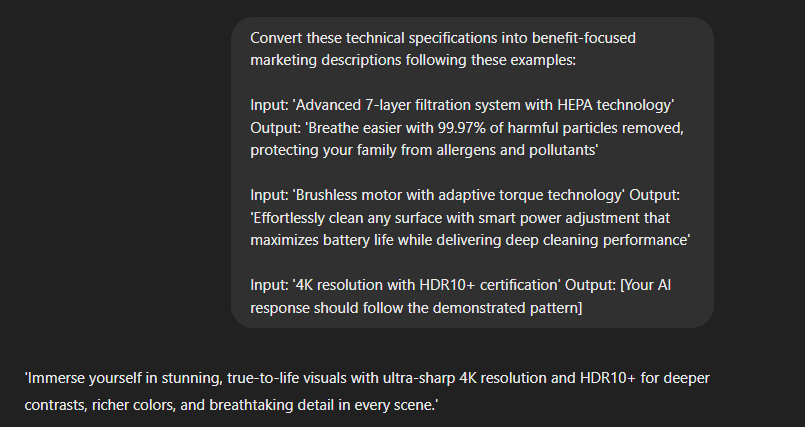
This approach leverages the AI’s pattern recognition abilities, often producing better results than lengthy explanations of what you want.
Calibrating Style and Tone Through Examples
Few-shot learning is particularly effective for communicating subtle stylistic preferences:
“Rewrite this email in a warm, professional tone that builds relationship while remaining concise. Here are examples of the tone I’m aiming for:
Example 1: ‘I appreciated our conversation yesterday and wanted to follow up on the questions you raised. I’ve attached the report we discussed, with the relevant sections highlighted for your convenience. Please let me know if you need anything else as you prepare for your board meeting.’
Example 2: ‘Thank you for sharing your team’s concerns about the timeline. I’ve consulted with our project managers, and we can adjust the delivery schedule to accommodate your key priorities. Would you have time this week to discuss a revised approach that might work better for both teams?’
My email that needs rewriting: [original email text]”
By showing rather than telling, you communicate nuanced preferences that might be difficult to articulate explicitly.
While novices struggle to explain what they want, prompt engineering experts show what they want through carefully selected examples that demonstrate the desired patterns.
Secret #5: Implement Strategic Context Layering for Deeper Understanding
The fifth secret of advanced prompt engineering is the strategic layering of context to enhance AI comprehension and response quality. Most users provide minimal background information, but experts know that thoughtfully structured context dramatically improves results.
The Context Layering Technique
Strategic context layering involves organizing background information in progressive levels of relevance and importance:
“I need to create a marketing strategy for a new plant-based protein product. Please consider the following contextual layers:
Immediate context: The product is a plant-based protein powder targeting fitness enthusiasts who are concerned about environmental sustainability. It uses a proprietary blend of pea, hemp, and pumpkin proteins.
Market context: The plant-based protein market is growing at 14% annually, but is becoming increasingly crowded with competitors. Our key differentiator is environmental sustainability credentials and transparent sourcing.
Customer context: Our target customers are primarily millennials and Gen Z consumers who exercise regularly, follow fitness influencers, and make purchasing decisions based on both personal health and environmental impact.
Business context: We’re a startup with limited marketing budget ($50,000 for the first quarter) but have secured distribution in specialty fitness stores and direct-to-consumer e-commerce.
Based on these contextual layers, develop a comprehensive marketing strategy that maximizes our limited resources while establishing our brand position in this competitive market.”
This layered approach provides the AI with a rich understanding of the situation from multiple perspectives, resulting in more tailored, nuanced recommendations.
Contextual Contrasting for Clarification
Advanced context layering also uses contrasting information to clarify boundaries and expectations:
“I’m writing documentation for developers with the following contextual considerations:
What the documentation IS: A technical guide for experienced programmers who need to implement our API in enterprise environments, with security being a primary concern.
What the documentation IS NOT: A beginner’s tutorial on programming concepts or a sales pitch for our product’s features.
What the readers ALREADY KNOW: Core programming concepts, basic API implementation patterns, and general security principles.
What the readers DO NOT know: Our specific authentication protocols, rate limiting policies, and error handling patterns.
With this contextual understanding, create a documentation structure that focuses precisely on what these developers need without including unnecessary information.”
This contrasting approach helps eliminate irrelevant content and focuses the AI on producing exactly what’s needed for the specific audience and purpose.
While basic users provide minimal context, prompt engineering experts strategically layer relevant information to create a comprehensive situational understanding that improves response quality.
Secret #6: Master the Art of Iterative Refinement Loops
The sixth secret that distinguishes advanced prompt engineers is their approach to iteration. Rather than expecting perfect results from a single prompt, they design intentional refinement loops that progressively improve outputs through specific feedback.
Guided Iteration Pathways
Instead of making general requests for improvement, expert prompt engineers create structured iteration paths:
“I’d like to develop a business proposal through a series of refinement steps:
Step 1: Generate an initial outline covering the key components of the business model, target market, competitive advantage, and financial projections.
Step 2: After reviewing the outline, I’ll identify 2-3 sections that need deeper development. For those sections, expand with more specific details, examples, and supporting evidence.
Step 3: I’ll then identify any logical gaps or weaknesses in the argument. Address those specific issues while maintaining consistency with the overall proposal.
Step 4: Finally, optimize the language for persuasiveness and clarity, ensuring the proposal is compelling to potential investors while remaining factually grounded.
Let’s begin with Step 1, and I’ll guide us through each iteration based on my assessment of what needs refinement.”
This structured approach treats iteration as an intentional process rather than a reaction to inadequate results.
Comparative Refinement Technique
Advanced iteration can also involve generating multiple alternatives and refining based on comparative assessment:
“Create three different versions of an introduction paragraph for an article about sustainable architecture:
- Version A: A data-driven, research-focused approach
- Version B: A narrative approach that starts with a specific building example
- Version C: A provocative, challenge-oriented approach that addresses common misconceptions
After reviewing the options, I’ll select one direction and provide specific feedback for further refinement of that version.”
This approach leverages divergent thinking before convergent refinement, often resulting in more creative, effective outcomes.
While novices make vague requests for improvement when dissatisfied, prompt engineering experts design intentional iteration pathways that systematically enhance results through structured feedback loops.
Secret #7: Implement Cognitive Forcing Functions to Reduce Errors
The seventh secret of advanced prompt engineering involves implementing cognitive forcing functions—specific instructions that require the AI to perform error-checking processes that reduce mistakes and improve accuracy.
Systematic Error Prevention Protocols
Expert prompt engineers build error-checking steps directly into their prompts:
“Analyze the financial projections in this business plan using the following verification protocol:
- First, check the internal mathematical consistency of all calculations and flag any discrepancies
- Next, verify that growth assumptions are consistent across related metrics (e.g., customer acquisition costs align with marketing budget)
- Then, compare the projections against industry benchmarks and identify any outliers that deviate significantly without explanation
- Finally, perform a sensitivity analysis by testing how a 20% negative change in key assumptions would affect overall outcomes
Present your findings with specific attention to potential errors or unrealistic assumptions that could undermine the plan’s credibility.”
This structured verification process forces the AI to engage in systematic error checking rather than simply generating plausible-sounding analysis.
Counterargument Generation
Another powerful forcing function is the requirement to generate counterarguments:
“Develop a strategic recommendation for entering the Asian market, but include these cognitive safeguards:
- After presenting each major recommendation, identify the strongest counterargument or potential failure mode
- For each risk identified, assess its likelihood and potential impact
- Before concluding, review your initial assumptions and identify which ones, if incorrect, would most significantly undermine your strategy
- Explicitly consider what competing analysis might be missing from your assessment”
By requiring the AI to actively seek weaknesses in its own reasoning, this approach reduces overconfidence and blind spots.
While basic users accept AI outputs at face value, prompt engineering experts implement cognitive forcing functions that reduce errors through structured verification processes and critical assessment.
Secret #8: Apply Audience Calibration for Optimal Communication
The eighth secret of effective prompt engineering is precise audience calibration—tailoring content not just for general audiences but for specific reader needs, knowledge levels, and information processing preferences.
Multi-Dimensional Audience Mapping
Advanced prompt engineers define audiences along multiple relevant dimensions:
“Create an explanation of blockchain technology calibrated for the following specific audience:
Knowledge profile: Financial professionals with strong understanding of traditional banking systems but limited technical background in cryptography or distributed systems
Informational needs: Need to understand implications for payment processing, security considerations, and potential regulatory challenges rather than implementation details
Cognitive preferences: Prefer concrete examples tied to existing financial concepts, respond well to analogies that connect new ideas to familiar frameworks, and appreciate balanced perspectives that address both opportunities and limitations
Communication context: Reading this as part of a professional development requirement, with limited time and attention, primarily concerned with practical business applications rather than theoretical foundations”

This multifaceted audience mapping creates truly targeted communication rather than generic “beginner” or “advanced” content.
Adaptive Explanation Techniques
Audience calibration can also include adaptive explanation approaches:
“Explain quantum computing for a technical business audience using a tiered explanation approach:
- Start with a conceptual overview using business-relevant analogies that connect to familiar computing concepts
- Then introduce key technical concepts that have direct business implications, defining specialized terms as needed
- Include specific industry applications that demonstrate practical relevance
- Address common misconceptions that business professionals often have about quantum technology
- Conclude with a forward-looking assessment of when and how the technology might affect business operations
Throughout, maintain a balance between technical accuracy and accessibility, prioritizing concepts with practical business relevance.”
This layered approach ensures complex information is presented in a way that aligns with the audience’s specific knowledge needs and cognitive frameworks.
While novices create generic content for broad audiences, prompt engineering experts calibrate their communications across multiple dimensions of audience characteristics for optimal comprehension and engagement.
Secret #9: Integrate Meta-Cognitive Guidance for Self-Improving AI Interactions
The ninth and perhaps most sophisticated secret of prompt engineering involves providing meta-cognitive guidance—instructions about how the AI should think about its own thinking process. This approach creates a framework for self-improvement within the conversation.
Reflective Analysis Protocols
Advanced prompt engineers implement reflection steps that improve subsequent responses:
“After you provide your initial analysis of this marketing strategy, implement the following reflective protocol:
- Identify the primary assumptions underlying your analysis and evaluate their strength based on the information provided
- Assess which areas of your response would benefit most from additional information, and specify exactly what would be most helpful to know
- Review your recommendations for potential implementation challenges that weren’t fully addressed
- Consider alternative frameworks or approaches that might yield different insights
Based on this reflection, refine your analysis to address the most significant limitations or gaps identified.”
This meta-cognitive approach creates a second-order improvement process that enhances the quality of AI assistance beyond what could be achieved with direct instructions alone.
Progressive Complexity Management
Meta-cognitive guidance also helps manage complex topics through progressive development:
“We’ll be exploring the ethical implications of genetic engineering technologies through a series of increasingly nuanced questions. For this conversation:
- Start by establishing a foundation of core concepts and key considerations before moving to more complex analysis
- When introducing new ethical frameworks or perspectives, explicitly connect them to previously discussed concepts
- If you detect oversimplification in how I’m thinking about an issue, suggest more nuanced considerations that might be overlooked
- Periodically summarize key insights and identify emerging patterns in our exploration
- If you recognize that my questions are missing important dimensions of the issue, suggest additional angles I might consider
This meta-framework will help us develop a comprehensive understanding of this multifaceted topic through our conversation.”
This approach creates a dynamic learning system that actively manages complexity and promotes deeper understanding over time.
While most users focus solely on immediate responses, prompt engineering masters implement meta-cognitive frameworks that create self-improving interaction systems for more sophisticated exploration of complex topics.
Conclusion: The Future of Human-AI Collaboration
These nine essential prompt engineering secrets represent the cutting edge of effective human-AI communication. By mastering structural frameworks, role-based prompting, output parameter control, example-driven communication, strategic context layering, iterative refinement loops, cognitive forcing functions, audience calibration, and meta-cognitive guidance, you can achieve results that most AI users never experience.
As AI systems continue to evolve, the ability to communicate effectively with them becomes increasingly valuable. Those who master these prompt engineering secrets will be able to:
- Extract more accurate, nuanced information
- Generate higher-quality creative content
- Develop more innovative solutions to complex problems
- Learn more effectively with AI assistance
- Create more efficient, effective workflows
- Make better-informed decisions based on comprehensive analysis
The difference between basic AI interactions and truly powerful collaboration lies not in the AI itself, but in how skillfully you communicate with it. By applying these nine secrets, you can transform your relationship with AI tools from simple question-answering to sophisticated thought partnership that amplifies your own capabilities.
The most successful professionals, creators, and learners in the AI age will be those who master not just what to ask, but how to ask it. With these prompt engineering secrets, you’re now equipped to join that group and maximize your AI success.
How do I get the most accurate information from AI?
To ensure accuracy, always phrase your question clearly, ask AI to perform a web search, and verify important information from multiple sources.
How do I make AI-generated summaries more effective?
Specify the level of detail you need. For example, use “Summarize this in 3 key points” or “Explain this as if I’m 10 years old.”
How do I keep my AI interactions private?
Enable temporary chat mode if available, or use AI tools that do not store user conversations for training purposes.
